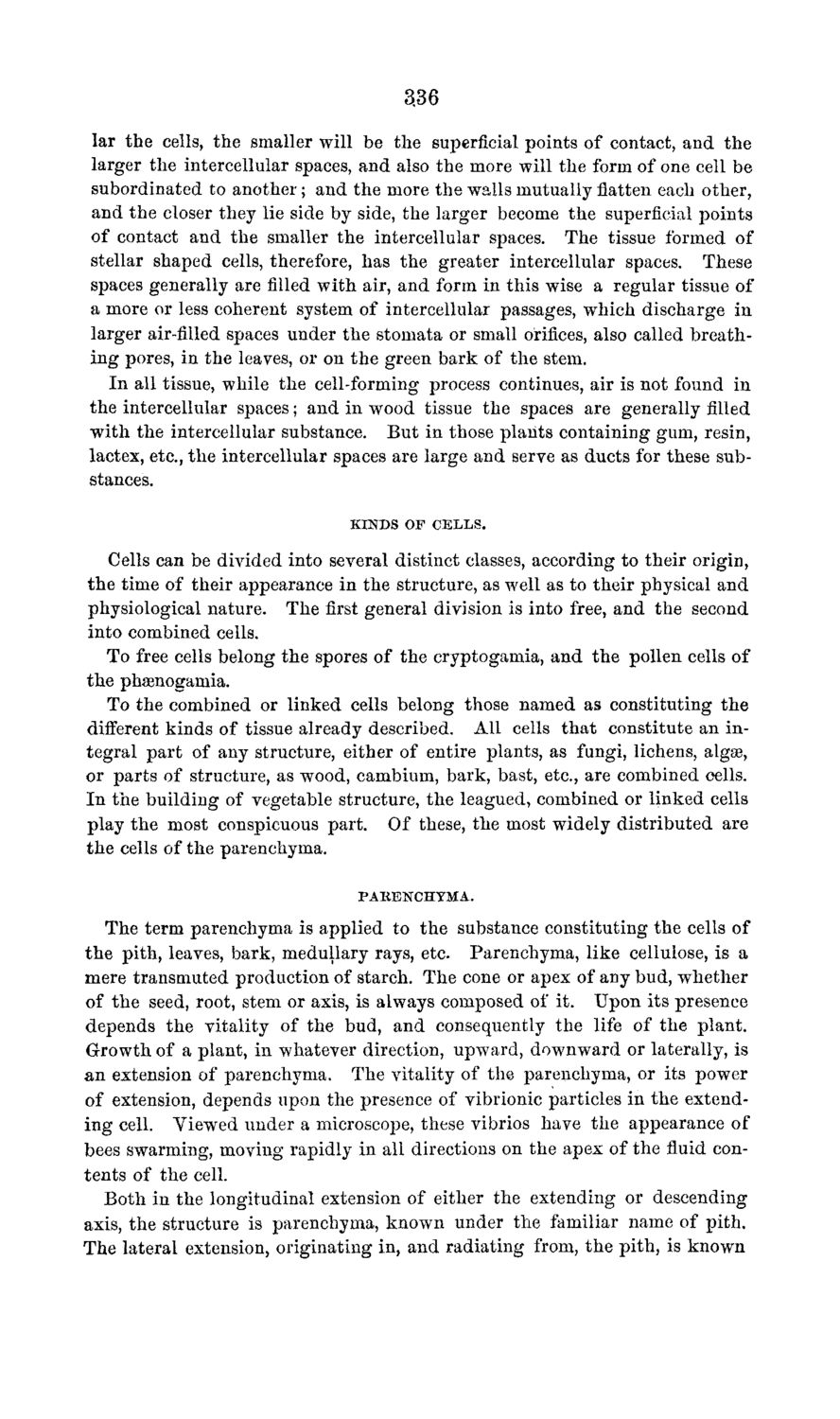| |
| |
Caption: Board of Trustees Minutes - 1869
This is a reduced-resolution page image for fast online browsing.

EXTRACTED TEXT FROM PAGE:
336 lar the cells, the smaller will be the superficial points of contact, and the larger the intercellular spaces, and also the more will the form of one cell be subordinated to another; and the more the walls mutually flatten each other, and the closer they lie side by side, the larger become the superficial points of contact and the smaller the intercellular spaces. The tissue formed of stellar shaped cells, therefore, has the greater intercellular spaces. These spaces generally are filled with air, and form in this wise a regular tissue of a more or less coherent system of intercellular passages, which discharge in larger air-filled spaces under the stomata or small orifices, also called breathing pores, in the leaves, or on the green bark of the stem. In all tissue, while the cell-forming process continues, air is not found in the intercellular spaces; and in wood tissue the spaces are generally filled with the intercellular substance. But in those plants containing gum, resin, lactex, etc., the intercellular spaces are large and serve as ducts for these substances. KINDS OF CELLS. Cells can be divided into several distinct classes, according to their origin, the time of their appearance in the structure, as well as to their physical and physiological nature. The first general division is into free, and the second into combined cells. To free cells belong the spores of the cryptogamia, and the pollen cells of the phsenogamia. To the combined or linked cells belong those named as constituting the different kinds of tissue already described. All cells that constitute an integral part of any structure, either of entire plants, as fungi, lichens, algse, or parts of structure, as wood, cambium, bark, bast, etc., are combined cells. In the building of vegetable structure, the leagued, combined or linked cells play the most conspicuous part. Of these, the most widely distributed are the cells of the parenchyma. PARENCHYMA. The term parenchyma is applied to the substance constituting the cells of the pith, leaves, bark, medullary rays, etc. Parenchyma, like cellulose, is a mere transmuted production of starch. The cone or apex of any bud, whether of the seed, root, stem or axis, is always composed of it. Upon its presence depends the vitality of the bud, and consequently the life of the plant. Growth of a plant, in whatever direction, upward, downward or laterally, is an extension of parenchyma. The vitality of the parenchyma, or its power of extension, depends upon the presence of vibrionic particles in the extending cell. Viewed under a microscope, these vibrios have the appearance of bees swarming, moving rapidly in all directions on the apex of the fluid contents of the cell. Both in the longitudinal extension of either the extending or descending axis, the structure is parenchyma, known under the familiar name of pith. The lateral extension, originating in, and radiating from, the pith, is known
| |